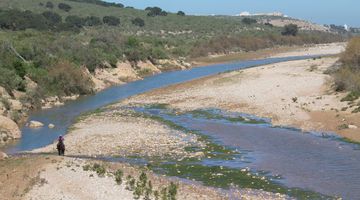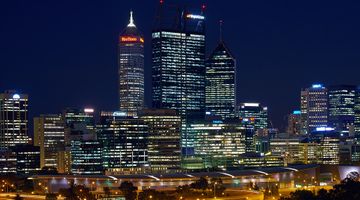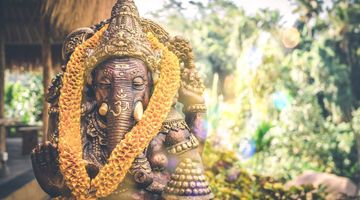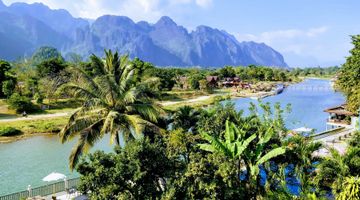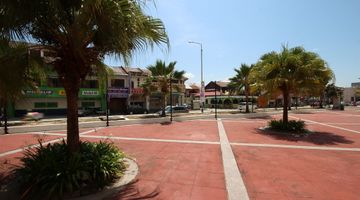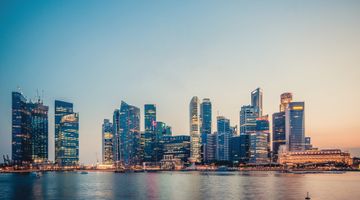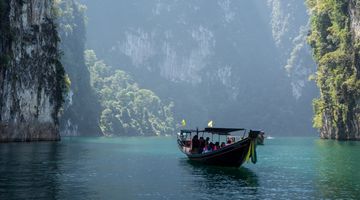Ultimate Travel Guide for Morocco for 2025
How to get to Morocco?
Morocco borders Algeria, Mauritania, and through the Strait of Gibraltar - with Spain and Portugal. Most international travelers fly into Morocco, with major airports in Casablanca (Mohammed V Airport), Marrakech, and Rabat. Royal Air Maroc and several international airlines offer direct flights from Europe, the Middle East, and North America.
Travelling to Morocco from Europe
✈️ Major airlines such as Ryanair, EasyJet, and Air France offer frequent and affordable flights to Moroccan cities such as Marrakech, Casablanca, Fez, and Agadir from hubs such as Madrid, Paris, London, and Rome.
⛴ Ferries: For a scenic option, take a ferry from Spain (such as Algeciras, Tarifa, or Malaga) to Morocco and ports such as Tangier. These crossings are fast and ideal for car travelers.
✉️ Visa requirements. Most European citizens can visit Morocco for up to 90 days without a visa.
Travelling to Morocco from the US
You can book a direct or connecting flight to major cities in Morocco, such as Casablanca (CMN), Marrakech (RAK), or Tangier (TNG). Airlines such as Royal Air Maroc and Delta often offer direct flights.
✉️ Visa requirements. US citizens can stay in Morocco for up to 90 days without a visa, but a valid passport with at least six months of validity is required.
Direct flights to Morocco from the US typically depart from:
📍 New York City (JFK): Royal Air Maroc offers direct flights to Casablanca.
📍 Washington, D.C. (IAD): Some airlines operate seasonal direct flights to Casablanca.
📍 Miami (MIA): Occasionally provides direct flights to Casablanca with Royal Air Maroc.
Best time to go to Morocco
The best time to travel depends on the region and the type of activity. The period from late May to October is suitable for a beach holiday, and trekking in the mountains is best done in spring and autumn.
City walking is possible year-round, although summer can be pretty hot. You can go to the desert in spring, autumn, and winter when there are few tourists, and it gets colder in the evenings.
What’s the best time to visit Morocco?
The high season is from October to Christmas and New Year to New Year.
The low season is from November to March.
Summers can be very hot, especially in the Sahara Desert and Marrakech, while winters can be cold in mountainous areas.
How to get around Morocco?
Travel to Morocco offers a variety of options for every travel style. Choose between a reliable train network, budget buses or fast domestic flights to explore this fascinating country your way.
Trains in Morocco
Morocco’s rail network (ONCF) is reliable and connects major cities such as Casablanca, Rabat, Marrakech, and Fez. The high-speed Al Boraq train is excellent for quick trips between Tangier, Rabat, and Casablanca.
Buses in Morocco
Bus tickets to Morocco usually cost around $5 to $7 for short routes, depending on the distance and destination.
🚍 These buses offer comfortable travel to areas outside the rail network, including small towns and remote regions, making them an excellent choice for exploring Morocco’s hidden gems.
Taxis in Morocco
🚕 Taxis are an affordable way to travel between nearby cities or towns but can be cramped. Private taxis are an alternative for convenience.
Private transfers in Morocco
Domestic Flights in Morocco
Royal Air Maroc and Air Arabia offer flights connecting major cities such as Marrakech, Casablanca, and Agadir for quicker long-distance travel.
Where to travel in Morocco?
Many cities in Morocco have a medina, an old center where the sights are concentrated. People who walk here travel on mules, donkeys, or scooters.
Marrakech 🕌
What to visit in Marrakech?
-
Jardin Majorelle. In 1924, French artist Jacques Majorelle created his greatest masterpiece - the beautiful garden, known for its bright blue color, showcases his unique style in the villa, walls, and fountains. The Majorelle Gardens are a one-hectare (two-acre) botanical and artistic landscape garden in Marrakech. It was created by the French orientalist artist Jacques Majorelle over almost forty years, starting in 1923. The garden houses a Cubist villa designed by the French architect Paul Sinoire in the 1930s. Today, the garden and the villa complex are open to the public. The villa is home to a Berber museum, and in 2017, the Yves Saint Laurent museum opened nearby.
-
Dar Si Said Museum is a historic late 19th-century palace and modern museum. It now houses the National Museum of Weaving and Carpet Making.
Where to go from Marrakech?
Marrakesh to Casablanca: Traveling from Marrakesh to Casablanca offers several options. The fastest and most affordable is the bus, which takes 2 hours and has fares from $8. Alternatively, the train provides a comfortable 3.5-hour journey starting at $22. For more flexibility, vans are available from $31, while flights offer the quickest route, starting at $109.
Marrakesh to Agadir The cheapest option for Traveling from Marrakesh to Agadir is the bus, with fares starting at $7 for a 3-4 hour journey. A private transfer takes just 1 hour and 30 minutes for the fastest option.
Marrakesh to Essaouira: To travel from Marrakesh to Essaouira, you can choose between a bus ($8-$12, 2-3 hours), a van ($20-$96), or a taxi ($121-$252), with buses being the most popular and affordable option. Flights are also available but are significantly more expensive, starting at $253.
Marrakesh to Tangier To get from Marrakesh to Tangier, you can choose a bus ($24, 10-12 hours), train ($31-$67, 5-6 hours), or van ($75-$232). Flights are faster but more expensive, starting at $119, while the train is the most popular option for comfort and efficiency.
Marrakesh to Fes To travel from Marrakesh to Fes, options include buses (8-9 hours, from $19), trains (6-7 hours, $37+), or private transfers (4 hours, $88+). The train is the most popular choice for its balance of comfort and travel time.
Rabat 🛕
Rabat, Morocco’s capital, is often overshadowed by its more famous neighbors, Marrakech and Casablanca, but it’s an astonishing city.
Clean, organized, and hassle-free, Rabat offers a refreshing take on Morocco. The medina is lively yet relaxed, with friendly locals, fresh juice stalls, and stunning riads. It’s the perfect introduction for first-time visitors to the country.
Don’t miss the Oudayas Kasbah, with its Andalusian gardens and panoramic views of the Atlantic. The Hassan Tower and the Mausoleum of Mohammed V are steeped in history and showcase the city’s architectural heritage. Nearby, Chellah’s ancient ruins tell stories of Roman and Islamic pasts.
If you’re after Morocco without the chaos, Rabat is your city. It’s a hidden gem waiting to be discovered, perfect for a day or two of exploration.
Where to go from Rabat?
From Rabat, you’re perfectly positioned to explore Morocco’s diverse cities and landscapes.
Rabat to Casablanca Visit Morocco’s largest city with its blend of modernity and tradition. The cheapest option is to take a bus. It takes 45 minutes to 2 hours to get from Rabat to Casablanca. The most affordable option is from 3$.
Rabat to Fes (2.5 hours by bus/train)
Step into the past in one of the world’s oldest medinas. Fes is about winding alleys, artisan workshops, and historic sites like the Al Quaraouiyine University. The cheapest option is from 7$.
Rabat to Meknes (2 hours by bus/train): Explore Meknes’ imperial vibes. The cheapest option starts at $6$.
Rabat to Tangier (4 hours by train/bus)
For a taste of coastal charm, head north. Tangier’s mix of Mediterranean and Moroccan culture makes it an intriguing stop, with its kasbah and views over to Spain.
Casablanca 🕌
Casablanca is Morocco's largest and most populous city, known for its mix of modern vives and tradition.
As the country's economic and business hub, it boasts a unique blend of French colonial architecture and Moroccan influences. The Hassan II Mosque, one of the city's most iconic landmarks, stands majestically on the Atlantic Ocean.
It is not only one of the largest mosques in the world but also a marvel of modern architecture. It can accommodate 25,000 worshippers inside and an additional 80,000 in the surrounding square. This impressive structure is a testament to the city's rich cultural heritage and significant role in Morocco’s history.
Where to go from Casablanca?
Casablanca to Marrakesh To travel from Casablanca to Marrakesh, you can choose between buses (4-5 hours, $7+), trains (3-4 hours, $20+), or flights (1 hour, $110+). Trains are the most popular for their comfort and efficiency.
Casablanca to Tangier To travel from Casablanca to Tangier (68 miles), you can take a train ($38–$55), bus ($12–$17), flight (from $124), or taxi (up to $481). Trains are the fastest and most popular option, while buses provide an affordable alternative.
Casablanca to Rabat To travel from Casablanca to Rabat (24 miles), you can choose a bus ($4–$8), train ($21), or taxi (up to $200). Buses are the most affordable option, while trains offer a faster and more comfortable journey.
Chefchaouen 🔵
Chefchaouen is a city in northwestern Morocco, known for its unique blue-painted buildings that cover most of the city, earning it the nickname "The Blue City."
Located in the Rif Mountains, it offers stunning views and a peaceful atmosphere. The city is famous for its vibrant arts and crafts scene, with local markets selling handmade goods like textiles, pottery, and leather products.
Its history dates back to 1471 when it was founded as a fortress by Moulay Ali Ben Moussa Ben Rached El Alami. Chefchaouen's relaxed pace and charm make it a popular destination for tourists seeking a more tranquil and authentic Moroccan experience.
It also has a rich culinary culture, with local specialties like goat cheese, tagine, and freshly baked bread available in cafes and restaurants.
Where to go from Chefchaouen?
Chefchaouen to Fes To travel from Chefchaouen to Fes (94 miles), you can take a bus ($15–$17), van ($38–$85), or taxi ($160–$265). Buses are the most affordable and popular option, with a travel time of 3 to 5 hours.
Chefchaouen to Tangier To travel from Chefchaouen to Tangier (63 miles), you can take a bus ($9–$10), van ($31–$53), or taxi ($118–$201). Buses are the most affordable and popular option, with a travel time of 2 to 4 hours.
Chefchaouen to Rabat To travel from Chefchaouen to Rabat (94 miles), you can take a bus ($12–$22), van ($49–$90), or taxi ($214–$324). The van is the most popular choice, offering a balance of affordability and speed with a travel time of 3 to 7 hours.
Chefchaouen to Casablanca To travel from Chefchaouen to Casablanca (125 miles), you can take a bus ($13–$24), van ($65–$159), or taxi ($287–$438). The bus is the most popular and affordable option, with a travel time of 4 to 7 hours.
Chefchaouen to Marrakesh You can travel from Chefchaouen to Marrakesh by bus ($43–$45), van ($82–$107), or taxi ($467–$717), with buses being the most affordable option. The journey takes 7 to 11 hours, depending on the mode of transport.
Tangier ⚓
Tangier is a port city located in northern Morocco, at the crossroads of the Mediterranean Sea and the Atlantic Ocean. Known for its strategic position, it has long been a melting pot of cultures, with influences from Europe, Africa, and the Middle East.
The city's history dates back to ancient times and has been shaped by various civilizations, including the Phoenicians, Romans, and Arabs.
Tangier is famous for its vibrant medina, where narrow streets lead to markets offering everything from spices to textiles. The city's iconic Kasbah, perched on a hill, offers panoramic views of the surrounding area.
Where to go from Tangier?
Tangier to Marrakesh You can travel from Tangier to Marrakech by train, which takes approximately 5 hours, or by bus, a budget-friendly option that takes around 8 hours. Flying with transfers is another possibility, though it takes 10+ hours, while a private transfer offers the most convenience and flexibility. Prices start as low as $24, allowing you to choose the option that best fits your schedule and budget.
Tangier to Casablanca. The most affordable way to travel is by bus, taking about 5 hours with fares starting from just $11. Alternatively, you can opt for the faster train journey, which takes only 2 hours and starts at $37. Other travel options are also available, allowing you to choose what best suits your budget and schedule.
Tangier to Rabat. To get from Tangier to Rabat, you have several options. The bus takes 3-4 hours, with tickets starting at $9, while the train is faster, completing the journey in just 1.5 hours, with fares from $28. For more flexibility and comfort, vans or taxis are available starting at $76. Choose the option that best fits your schedule and budget!
Tangier to Chefchaouen Traveling from Tangier to Chefchaouen is easy and convenient. The bus takes just 2 hours, with tickets starting at $8. For more flexibility, you can opt for a van, available from $30.
Fez 🍛
Fez is one of Morocco's most iconic cities, known for its rich history, ancient architecture, and vibrant culture. It is also one of the former capitals. Tourists associate it with the TV series "Clone" and leather workshops. Fez is often considered the cultural and spiritual heart of the country.
Fez is home to one of the oldest universities in the world, the University of Al-Karaouine, founded in 859 AD. The city has preserved its medieval heritage, such as the main medina of Fes el-Bali, a UNESCO World Heritage Site.
Fez is famous for its crafts, especially leather goods. Be sure to visit a tannery where you can see traditional leather-processing techniques that have been practiced for centuries.
You can visit the Bou Inania Madrasa, explore historic palaces, or simply wander around the medina to experience daily life in a city that has remained relatively unchanged for centuries.
Where to go from Fez?
Fes to Marrakesh To travel from Fez to Marraksh, you can choose between several options. The bus journey takes 8-9 hours, while the train is a faster alternative, taking 6-7 hours. For the quickest and most convenient option, a private transfer can get you there in just 4 hours.The most budget-friendly option is to take a bus, with tickets starting at just $16.
Fes to Chefchaouen You can reach the destination by bus, private transfer, or flight. The fastest option is a private transfer, taking just 3 hours, while the bus takes 4-5 hours and is the most affordable choice, with fares starting at $10.
Fes to Rabat To travel from Fes to Rabat, you can take a bus ($8–$12), train ($17–$23), van ($41–$76), or taxi ($167–$273). The journey takes 2 to 16 hours, and trains are the most popular option for 93% of travelers.
Fes to Casablanca To get from Fes to Casablanca, you can travel by bus ($11–$19), train ($22–$27), van ($55–$240), taxi ($231–$360), or flight ($89–$518), with the journey taking 2 to 8 hours. Flights are the fastest option, but buses are the most affordable. There are 23 daily bus trips, and taxis offer a more flexible, expensive choice.
Meknes 🕌
Meknes is a historic imperial city in Morocco, known for its unusual architecture. Meknes is a quieter place than Marrakech or Fez, making it an ideal destination for history and culture lovers.
Bab Mansoura, one of Morocco’s most beautiful gates, and admire its intricate design. Also here is Heri es Souani, the impressive granaries and stables of Sultan Moulay Ismail. Don’t miss the enormous royal stables built to house 12,000 horses. For a touch of history, head to Volubilis, a nearby Roman ruin.
Where to go from Meknes?
Meknes to Casablanca To travel from Meknes to Casablanca, you can choose between bus ($10–$11), train ($23), van ($77–$83), or taxi ($193–$301). The journey takes 2 to 6 hours, with buses being the most affordable option. Vans offer a quicker alternative, while taxis provide the most flexibility.
Meknes → Tangier To get from Meknes to Tangier, you can take a bus ($12–$18), train ($20), van ($58), or taxi ($236–$371). The journey takes 3 to 5 hours, with buses being the most affordable option. Trains are popular for comfort, while vans offer a more budget-friendly alternative to taxis.
Meknes to Marrakech The only option to travel from Meknes to Marrakech is by bus, which takes around 8 hours and costs about $28. There are 4 bus trips daily, and it's recommended to book in advance for a more comfortable journey.
Meknes to Nador You can travel from Meknes to Nador by bus or train, with buses being the quicker option, taking around 7 hours and costing about $23. There are 4 trains and 2 buses per day on this route.
Zagora 🏜️
Known for its stunning dunes, traditional kasbahs and the iconic Timbuktu 52 Days sign, Zagora is an adventurer's paradise. Here you can enjoy camel treks, desert camping under the stars and visit the lush Draa Valley lined with palm groves.
Sahara Desert
🐫 Camel trekking in the Sahara is the main activity for which people come to Morocco. To see the orange sands of the Sahara and spend a night in the desert, tourists go to the village of Merzouga. You can also try your hand at sandboarding and spend a night in a tent in the middle of the desert.
Visa requirements for Morocco
Visa requirements for Morocco vary depending on your nationality. As of 2024, many travelers can enter Morocco without a visa for short stays of up to 90 days.
This includes citizens of the European Union, the United Kingdom, the United States, Canada, Australia and New Zealand. Other countries such as Japan, Brazil, South Korea and Malaysia also enjoy visa exemptions for stays of up to 90 days.
However, citizens of some countries may need to apply for a visa before entering Morocco. You can check the latest requirements on the official Moroccan embassy websites or use tools such as iVisa to confirm whether you need to apply.
Always check that your passport is valid for at least six months beyond your planned stay and retain proof of onward travel and accommodation when entering the country.
Budget for traveling in Morocco
Traveling to Morocco can be affordable, especially if you plan your trip carefully. You can use this itinerary for your trip.
Budget travelers can find hostels or budget hotels for around $15-$30 per night. Mid-range hotels or riads typically cost between $30-$70 per night.
Morocco is known for its delicious and affordable food. Street food or meals at budget restaurants typically cost under $4, while a good meal for two at a mid-range restaurant can cost around $20.
Many of Morocco’s attractions, such as exploring the medina, hiking in places like the Todra Gorge, or visiting local souks, are free or very inexpensive.
Some of the most popular activities, such as visiting the Hassan II Mosque or riding a camel, may have a higher entry fee of around $10-$20.
Morocco offers affordable transportation options. Public transportation, such as buses or trains, is budget-friendly. Renting a car is also reasonable, around $10-$20 daily.
If you travel on a budget, you can comfortably spend around $50-$75 per day, including food, transportation, and entertainment. For a more comfortable trip with some additional excursions, plan on around $100 per day.
The perfect itinerary for Morocco
The perfect 2-week Morocco itinerary includes Marrakech, Casablanca, Fez, and the Sahara Desert.
Day 1-3 (Casablanca)
Visit the famous Hassan II Mosque, one of the largest mosques in the world, and stroll along the Corniche. Explore the city, visiting the Royal Palace, the Habous Quarter, and the Museum of Moroccan Judaism for a more cultural experience.
Optional day trip to Rabat: Take a day trip to the Moroccan capital, about 1.5 hours away, to visit the Hassan Tower, Kasbah of the Udayas, and the Mausoleum of Mohammed V.
Day 4-5 (Fez)
Take a train or flight from Casablanca to Fez (approximately 4-5 hours). Explore Fes el-Bali: Stroll through the ancient Medina, a UNESCO World Heritage Site, and visit Al Quaraouine University and the Shuara Tannery.
Day 6-8 Merzouga (Sahara Desert)
Take a scenic drive into the Sahara Desert, to enjoy camel trekking in the dunes. Experience a desert camp: Spend the night in a traditional Berber tent under the stars, enjoying the tranquility and beauty of the desert.
Day 9-10 (Dades Valley and Skoura)
Explore the Dades Valley: After Merzouga, drive through the beautiful Dades Valley. Visit the Todgha Gorge and admire the stunning kasbahs and landscapes.
Stop in Skoura: A peaceful oasis, Skoura offers access to the Amridil Kasbah and beautiful palm groves.
Days 11–13 (Marrakech)
Depart for Marrakech: Head to the vibrant city of Marrakech (approximately 6–7 hours by road). Explore the Medina: visit the Jemaa el-Fna, Bahia Palace, and the Saadian Tombs. Stroll through the souks and soak up the atmosphere.
Day 14 (Casablanca)
Return to Casablanca: On your final day, return to Casablanca (approximately 2.5–3 hours from Marrakech) to rest and catch your flight home.
What to eat in Morocco? 🥘
National Moroccan cuisine is an original mix of Arabic, Berber, Jewish and Mediterranean cuisines. The main feature of traditional Moroccan cuisine is spices.
Cuisine in Morocco is a unique combination of sweet and salty. Everywhere you can find clay dishes covered with a pointed lid, the so-called tagine or tajine, a type of meat with vegetables. This dish is considered a symbol of traditional Moroccan cuisine.
It is cooked over a slow fire and contains large pieces of lamb or chicken. The meat is mixed with vegetables and fruits and stewed in its own juice for at least two hours. Also popular is kebab, which is called "kefta". Thick soups are the basis of any lunch.
FAQ
1. Is it safe to travel to Morocco right now?
Morocco is generally safe for tourists, but like anywhere, remain cautious of petty theft in crowded areas. Respect local customs and dress modestly, especially in rural areas.
2. What currency is used in Morocco?
The Moroccan Dirham (MAD). Credit cards are widely accepted in major cities, but cash is recommended for smaller towns and markets.
3. Can I drink alcohol in Morocco?
Alcohol is available in licensed bars, restaurants, and some supermarkets. However, it’s best to drink discreetly and respect local customs.
4. What languages are spoken in Morocco?
Arabic and Berber are the official languages. French is widely spoken, and English is increasingly common in tourist areas.
5. Do I need vaccinations for Morocco?
No specific vaccinations are required, but it’s advisable to be up-to-date on routine vaccines. Consider Hepatitis A and Typhoid vaccines.
